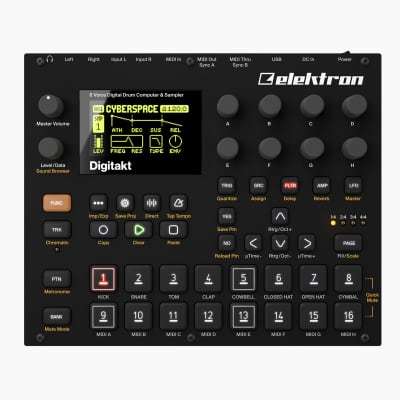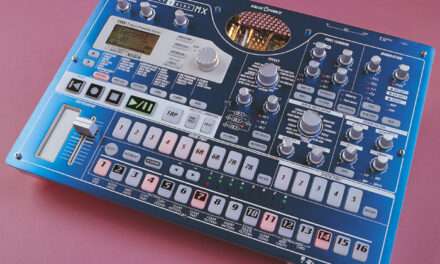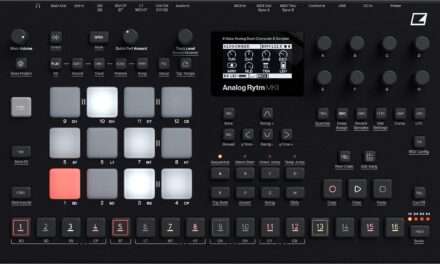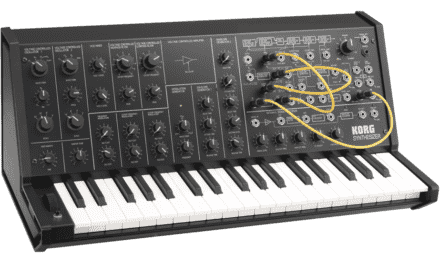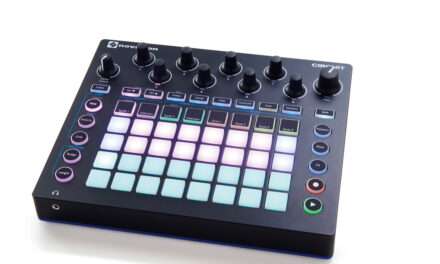The Elektron Digitakt is a powerhouse of creativity, blending sampling, sequencing, and sound design into one compact unit. Whether you’re a seasoned producer or just starting out, the Digitakt offers a world of possibilities. But with so many features packed into this little black box, it can feel overwhelming at first. Don’t worry—this tutorial will guide you through the basics and help you unlock the full potential of your Digitakt.
Getting Started: Setting Up Your Digitakt
Before diving into the fun stuff, let’s make sure your Digitakt is ready to go.
- Power Up: Connect the Digitakt to a power source using the included adapter. Turn it on, and you’ll be greeted by the home screen.
- Audio Connections: Plug your headphones or monitors into the audio outputs. If you’re sampling external sounds, connect your audio source to the inputs.
- MIDI Setup (Optional): If you want to control external gear, connect your MIDI devices to the MIDI input/output ports.
- Overbridge (Optional): For seamless integration with your DAW, install Elektron’s Overbridge software and connect the Digitakt via USB.
Understanding the Interface
The Digitakt’s interface is intuitive once you get the hang of it. Here’s a quick breakdown:
- Trig Buttons (1-16): These are used to trigger samples, enter notes in the sequencer, and navigate menus.
- Function (Func) Button: Acts as a shift key to access secondary functions.
- Knobs: Control parameters like volume, filter cutoff, and effects.
- OLED Screen: Displays important information and menus.
- Play/Stop and Record Buttons: Control playback and recording.
Step 1: Loading and Editing Samples
The heart of the Digitakt is its sampling engine. Let’s load and edit a sample.
- Load a Sample:
- Press Func + Yes to enter the sample manager.
- Use the knobs to browse and select a sample from the internal library or your own collection.
- Press Yes to load the sample onto a track.
- Trim and Normalize:
- Press Func + Track Button to enter the sample editor.
- Use the knobs to adjust the start and end points of the sample.
- Normalize the sample to ensure consistent volume levels.
- Assign to a Track:
- Press a Trig Button (1-8) to assign the sample to a track.
- Use the knobs to adjust parameters like pitch, filter, and amp envelope.
Step 2: Creating a Beat
Now that you have your samples loaded, let’s create a beat.
- Enter the Sequencer:
- Press Play to start the sequencer.
- Press Record to enter record mode.
- Add Triggers:
- Press the Trig Buttons to place notes on the grid.
- Use the Knobs to adjust the velocity and timing of each trigger.
- Parameter Locks (P-Locks):
- Hold a Trig Button and turn a knob to lock a parameter to that step.
- For example, you can lock a filter sweep or pitch change to a specific step.
- Conditional Triggers:
- Press Func + Trig Button to set a conditional trigger.
- Choose from options like “Fill,” “Random,” or “Neighbor” to add variation to your sequence.
Step 3: Adding Effects and Modulation
The Digitakt’s effects and modulation options add depth and movement to your sounds.
- Effects:
- Press Func + Track Button to access the effects menu.
- Use the knobs to adjust reverb, delay, and other effects.
- LFOs:
- Press Func + LFO Button to enter the LFO menu.
- Assign the LFO to parameters like pitch, filter, or volume.
- Adjust the LFO shape, rate, and depth to create evolving sounds.
- Envelopes:
- Press Func + Amp Button to access the amp envelope.
- Adjust the attack, decay, sustain, and release to shape your sound.
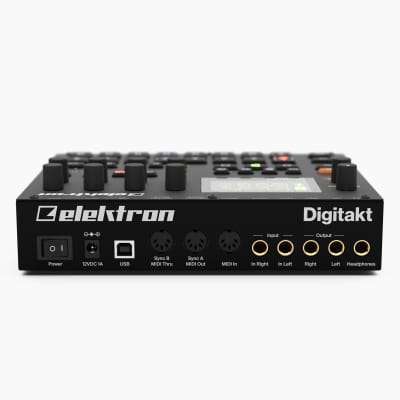
Step 4: Sequencing External Gear
The Digitakt isn’t just for internal sounds—it’s also a powerful MIDI sequencer.
- Set Up MIDI Tracks:
- Press Func + Track Button to assign a track to MIDI.
- Use the knobs to set the MIDI channel and note values.
- Sequence External Gear:
- Use the Trig Buttons to enter notes in the sequencer.
- Apply P-Locks and Conditional Triggers to add variation.
- Sync with Your DAW:
- Connect the Digitakt to your computer via USB.
- Use Overbridge to sync the Digitakt’s sequencer with your DAW.
Step 5: Saving and Exporting Your Work
Once you’ve created something you’re proud of, it’s time to save and export.
- Save Your Project:
- Press Func + Save Button to save your project.
- Use the knobs to name your project and press Yes to confirm.
- Export Your Tracks:
- Connect the Digitakt to your computer via USB.
- Use Overbridge to export individual tracks or the full mix.
Tips and Tricks for Getting the Most Out of Your Digitakt
- Experiment with P-Locks: Parameter locks are one of the Digitakt’s most powerful features. Don’t be afraid to experiment with locking different parameters to create dynamic and evolving patterns.
- Use Conditional Triggers: Conditional triggers add an element of randomness and variation to your sequences. Try using them to create fills, variations, and surprises in your beats.
- Explore Sound Design: The Digitakt is more than just a drum machine—it’s a powerful sound design tool. Experiment with sampling, filtering, and modulation to create unique sounds.
- Combine with Other Gear: The Digitakt plays well with other gear. Use it to sequence synths, drum machines, and effects pedals for a fully integrated setup.
Conclusion: Your Creative Companion
The Elektron Digitakt is a versatile and inspiring tool that can take your music production to the next level. With its intuitive workflow, powerful features, and compact design, it’s no wonder that the Digitakt has become a favorite among producers worldwide.
This tutorial has covered the basics, but the real magic happens when you start exploring and experimenting. So fire up your Digitakt, dive into the menus, and let your creativity flow. Whether you’re crafting beats, designing sounds, or sequencing external gear, the Digitakt is your ultimate creative companion.
Happy beatmaking!


